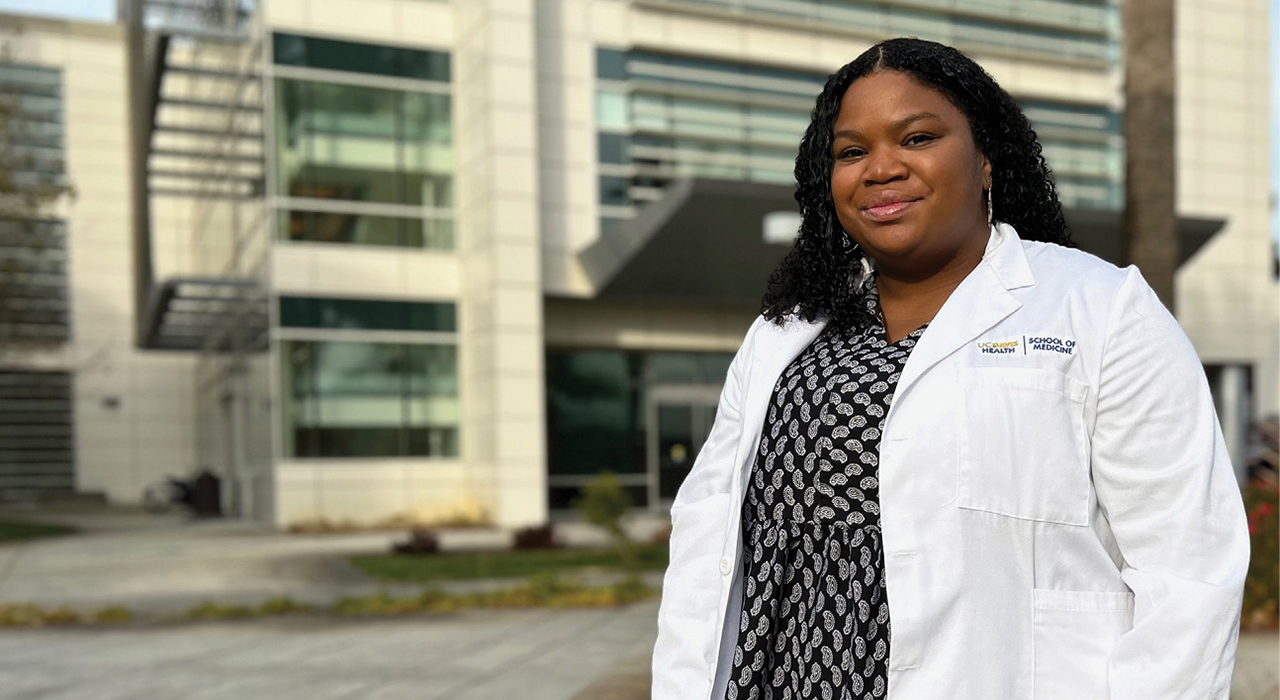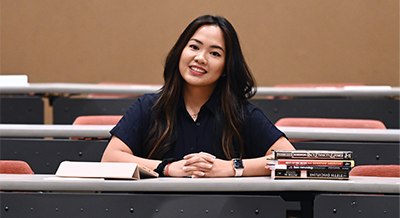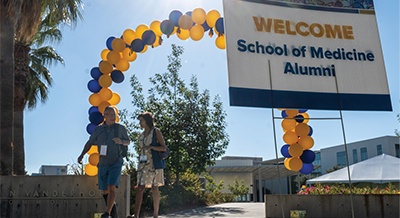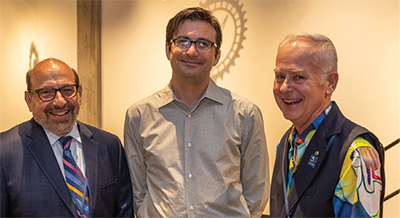Chelsea Nash watched helplessly as her mom agonized in an East Bay emergency room. “I’m in so much pain!” her mom cried out to the medical personnel. “Please help me!”
Nash, about 9 years old, was well aware of her mom’s painful, lingering health conditions and disliked how doctors were reacting. “One physician after another came in and they were basically saying, ‘there’s nothing wrong with you,’” Nash recalled. “Then they said to my mother, ‘if you don’t leave, we’ll have you escorted out.’”
Nash, the grandchild of 1960s Black Panther activists, suspects the mistreatment could have been race related. She and her mom are Black, and they never saw doctors who looked like them.
But the experience was so impactful that it became a catalyst for Nash’s career choice: She is now a second-year student at the UC Davis School of Medicine.
“I would love to be able to help people like my mother who was hurt and who has pain that often goes unnoticed or dismissed,” Nash said. “I want to be the kind of doctor who will say, ‘hey, I know your pain is valid and I’m going to give you the best care possible, even if your condition isn’t detected in the lab results.’”
‘I didn’t think Black people could be doctors’
Nash attended public schools in Oakland until her mother, a social worker, applied for an interdistrict transfer hoping for a better education. At Castro Valley High, Nash excelled and began to contemplate nursing — her grandmother was a licensed vocational nurse — but a friend talked her out of it. Medicine, the friend said, was more aligned with Nash’s love for research and desire to advocate for patients marginalized in health care settings.
But Nash had a hard time picturing herself as a physician.
During her senior year, Nash began to explore colleges in the South and on the East Coast, hoping to surround herself with a network of African American students. She chose Virginia State, a small and historically Black college. She was awarded the school’s Presidential STEM scholarship, which covered four years of tuition, room and board.
Creating a support system for future medical students
Nash fell in love with Virginia State but quickly noticed a glaring omission: A support system for students who dreamed of becoming doctors. The school lacked a pre-medicine track or pre-med student-run organization.
Nash and her friends vowed to fix that. They founded the school’s chapter of the Minority Association of Pre-Medical Students, or MAPS, the undergraduate arm of the Student National Medical Association, or SNMA. The budding leaders worked with professors to establish an academic track for pre-med, pre-dental and pre-physician assistant students.
“It felt so amazing,” Nash said, “we were finally making some changes and we were finally getting the same value of education as our counterparts in other schools, which we deserved.”
It wasn’t long before students connected with mentors, invited physicians to speak at gatherings, raised funds to attend medical conferences and landed summer internships. The organization also gave them access to tour medical schools including Howard, Duke and Eastern Virginia.
“What really moved me,” Nash said, “is that this was the first time that a lot of students, myself included, had ever been to a medical school campus.”
A family tragedy creates new challenges
The summer between her junior and senior years, Nash enrolled in a competitive 8-week global health internship through the University of Virginia, researching public health in the Caribbean. That experience propelled her to seek a master’s in global health.
After graduating magna cum laude in 2019 she enrolled at UCSF. Then her life took a couple of unexpected turns — the coronavirus pandemic, and her mother’s Stage 3 laryngeal cancer diagnosis.
Nash moved to Indiana and became an expert multitasker: taking her mom to radiation and chemotherapy, working on master’s projects, studying for the MCAT, dispensing medicine and changing bandages, studying some more.
She succeeded in finishing the degree, and doctors later declared Nash’s mother to be cancer free.
Choosing a medical school
Nash moved back to California where two medical schools extended offers: UCSF and UC Davis. Nash was unsure which to choose.
“UCSF had my heart, you know, because I went there for my master’s and it’s one of the top medical schools in the country,” Nash said. But there was something drawing her to UC Davis, too — the sense of a tight-knit, supportive community.
UC Davis gave her the vibe that students felt their colleagues and professors cared for them. Of note, she remembers UC Davis internal medicine Professor Jorge García open up about his rocky journey through medical school, and how he is now in a position to encourage students who get discouraged.
Nash has taught in the Health Equity Academy, mentored high school students, served at the Imani student-run clinic, joined the pediatric student-run interest group, and been elected social chair of SNMA. She belongs to the TEACH-MS pathway, which prepares students to fill the shortage of doctors in urban, underserved settings. Just like the Oakland neighborhood she grew up in.
“I want to work with historically marginalized populations, that’s just my jam,” Nash said. “I just I want to help people. I want to be like the people who once served me when I received care from Federally Qualified Health Centers. I think that’s my dream life.”





